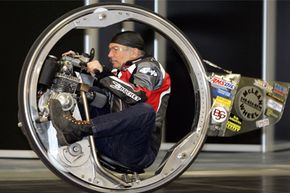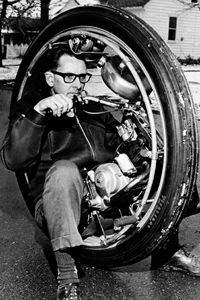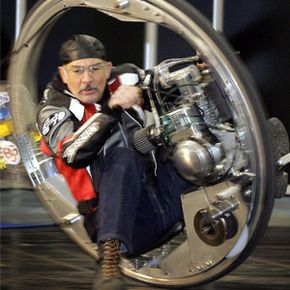There are many vehicles in this world that are worthy of the phrase, "You would have to be insane to drive that."
Take the 638-horsepower Corvette ZR1, for example, or the 200-mile per hour (321-kilometer per hour) Suzuki Hayabusa GSX-1300R. If that's not crazy enough for you, there's the three-wheel Campagna T-Rex, a tricycle that will outrun most sports cars.
Advertisement
What's that? Vehicles with four, two and even three wheels aren't extreme enough for you? How about something with just one wheel? Welcome to the exotic world of the monowheel -- a one-wheeled motorized vehicle. Unlike a unicycle, however, the driver of a monowheel actually sits inside, or sometimes next to, the wheel.
A monowheel looks like something out of a science fiction film, with its rider crouched inside and exposed to the elements while the giant wheel spins. It's kind of like a hamster wheel, except it's powered by a small engine. But monowheels are in fact real, and while they're mainly used for entertainment purposes today, for a short time, some people believed they could be viable forms of transportation.
The idea may sound extreme, but the science behind monowheels is solid, using many of the same principles that a bicycle or unicycle use to stay in motion and upright. But handling and braking are another story.
In this article, we'll take a close look at monowheels -- where they come from, how they move, and who continues to build them today. And who knows? After this, that Hayabusa might not seem quite as exciting to you as it once was.
Advertisement




